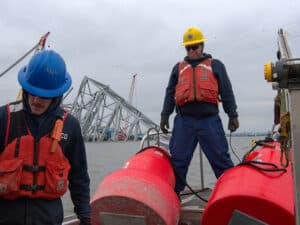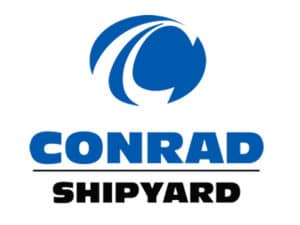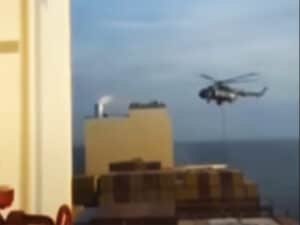
Port state control to crack down on ships’ fire safety
Written by Nick Blenkey JUNE 3, 2012 — Port state control agencies in 43 countries are to crack down on ships’ compliance with international fire safety requirements. Countries covered by the Paris and Tokyo MOUs are to launch a joint Concentrated Inspection Campaign (CIC) with the purpose of ensuring compliance with SOLAS Chapter II-2/ Construction – fire protection, fire detection and fire extinction arrangements on board ships.
JUNE 3, 2012 — Port state control agencies in 43 countries are to crack down on ships’ compliance with international fire safety requirements. Countries covered by the Paris and Tokyo MOUs are to launch a joint Concentrated Inspection Campaign (CIC) with the purpose of ensuring compliance with SOLAS Chapter II-2/ Construction – fire protection, fire detection and fire extinction arrangements on board ships.
The inspection campaign will be held for three months, from September 1, 2012 through November 30, 2012.
The CIC will mean that, during a regular port state control inspection under regional ship selection criteria, fire safety arrangements, maintenance records and other applicable documentation will be verified in more detail for compliance with SOLAS Chapter II-2.
Port State Control Officers (PSCOs) will use a list of 12 selected items to verify critical areas for the shipboard fire safety systems, some of which are related to documentation, equipment and crew familiarization.
PSCOs will use a questionnaire listing the items to be covered during the concentrated inspection. When deficiencies are found, actions may vary from recording a deficiency and instructing the master to rectify it within a certain period to detaining the ship until serious deficiencies have been rectified.
In the case of detention, publication in the monthly detention lists of the Paris and Tokyo MoU web sites will take place.
It is expected that the Paris and Tokyo MoUs will carry out approximately 10,000 inspections during the CIC.
The results of the campaign will be analyzed and findings will be presented to the governing bodies of the MoUs for submission to the IMO. Other MOUs may also carry out a CIC on the same topic during this period.
The questionnaire used by inspectors will ask:
- Does the Fire Control Plan meet the requirements?
- Do the fire fighters’ outfits including personal equipment comply with the requirements? Do the Emergency Escape Breathing Devices (EEBD) comply with the requirements?
- Are the portable extinguishers ready for use in locations as per the fire plan?
- Does the test of automatic audible alarm sound prior to release of a fixed gas fire-extinguishing medium into spaces in which personnel normally work?
- Are the fire protection systems, fire fighting-systems and appliances maintained ready for use?
- Is there a maintenance plan onboard to show that fire protection systems and fire-fighting systems and appliances (as appropriate) have been properly tested and inspected?
- Is the crew familiar with the location and operation of fire-fighting systems and appliances that they may be called upon to use?
- Does the test of the sprinkler system trigger an automatic visual and audible alarm for the section?
- Does the activation of any detector or manually operated call point initiate a visual and audible fire signal at the control panel on the bridge or control station?
- Is the lighting in escape routes, including the Low Location Lighting systems where applicable properly maintained?
- Is the Emergency Fire pump, capable of producing at least two jets of water?
- Are the Isolating valves of the fire main marked, maintained and easily operable?
- Where a fire drill was witnessed was it found to be satisfactory?
- Was the ship detained as a result of the CIC?





Leave a Reply
You must be logged in to post a comment.